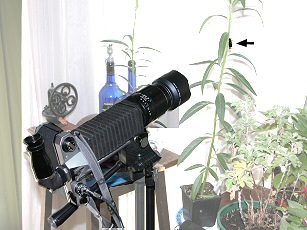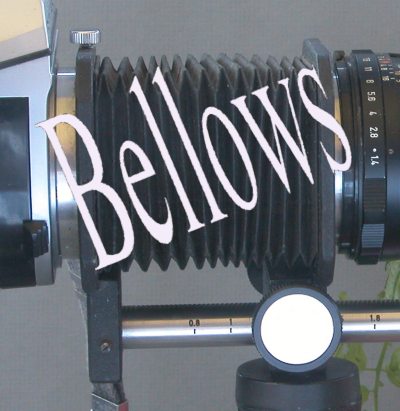
Mine is a simple bellows unit with threads for Pentax screw mount. The K-1000 camera is a bayonet camera but since when I got it I had a range of screw lens I organised an adaptor plate.
This is the expensive way to go, although I was lucky in that a camera shop was having a 'make and offer' sale and I offered what I had in my pocket, about $15<$20, and it was accepted. Some units have attachments for copying slides and other things and can be rather expensive.
I had always wanted one and in due course I was favoured. Although once having one it was a good many years before I had a need for it. A disadvantage of the bellows compared with extension tubes is that there is no connection to automatically close down the iris. If I read an advert correctly there maybe some that do this but the price was astronomical. I have never seen one.
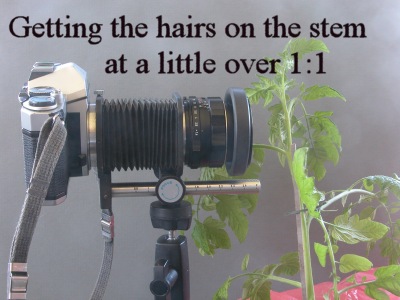
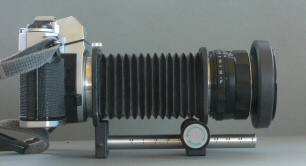
The camera is mounted on a little table-top tripod for the photo and if one used self timer, which the K1000 doesn't have, it should give the camera time to stop vibrating after pressing the trigger, or better using a cable release.
The bellows has two mounting positions. As it is keeps the lens stationary and moves the camera back for focusing.
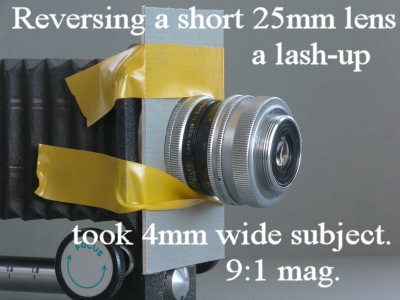
When one goes in for very close shots it is better turn the lens around using a 'filter thread' to 'filter thread' adaptor. These are both male threads. In this lash-up I simply cut a tight hole in a piece of stiff card ...I went away and the tape let go but the lens stayed in the card mount !
JIn a way you are 'projecting' the subject back onto the film and can well use a short focal length lens such as this 25mm from a 16mm movie camera. A lash-up for this page and to see just how close, at maximum rack of the bellows, one could go. Something like 26<27mm from the subject which was 4mm across filling the width of the 35mm frame.
9:1 magnification! Or is it 1:9?
JWhatever, it was very tricky to focus and the subject would need to be flat and parallel to the film plane for a successful shot.
With the bellows racked back and the 55mm lens the subject width range was 44>37mm wide ... so one starts close to "macro' 1:1.
This suggests that one needs extension tubes as well as bellows, although my tubes, stacked give me a 30>27mm width.
One could make a number of tubes with locking nuts to grip the proper extension tubes spaced to go closer. However with this you loose the auto-close of the iris.
I once took an enlargment of part of a 16mm movie frame with a pair of tube sets and a bit of drainpipe to more or less hold everything in line.
